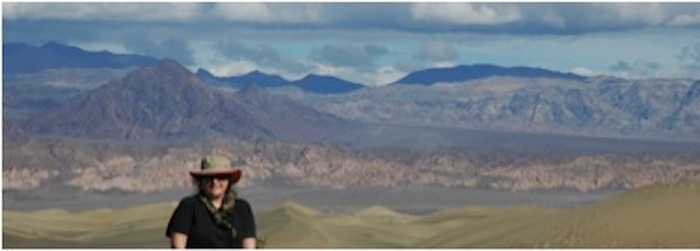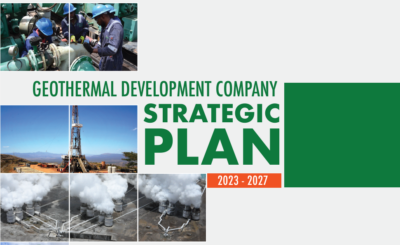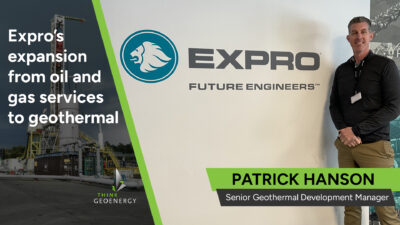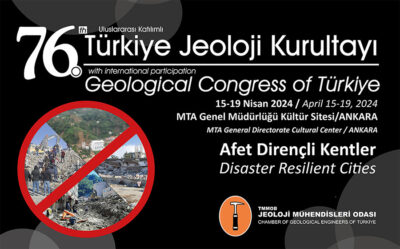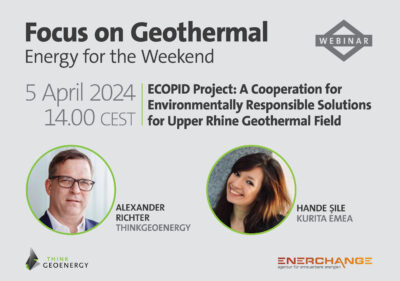Interview series: Ann Robertson-Tait, Biz Development Manager & Geologist at GeothermEx
Continuing the interview series, I had the chance to interview Ann Robertson-Tait, the Business Development Manager and Senior Geologist at GeothermEx, now owned by Schlumberger.
An interview with a good friend is always special, so it is with great honor that I had the chance to interview Ann Robertson-Tait of GeothermEx. She is a fellow (while elected) board member at the Geothermal Energy Association and clearly one of the most experienced geothermal specialists today.
Any introduction would not provide enough credit, so I asked Ann to briefly describe herself.
“I have been working continuously in geothermal since 1985, after completing my MSc in Geology at the University of Auckland in New Zealand. My MSc thesis was related to ground subsidence at the Wairakei geothermal field. This required an understanding of how the Wairakei resource evolved in response to exploitation, which was a great lesson in itself, particularly for a geologist new to geothermal. Since then, my entire professional geothermal career has been spent at GeothermEx, and it’s never been dull. In business since 1973, GeothermEx has worked on many different projects all around the world, providing an appreciation of the broad spectrum of geothermal resource types and how their subsurface “plumbing” works. Although each resource has certain unique characteristics, this broad experience lets us recognize patterns and find solutions pretty rapidly. Personally, I have worked on about 50 different geothermal resource areas in several geologic environments. My specialty has been interpreting subsurface information to determine what’s controlling permeability, and therefore where the hot water or steam is flowing as it makes its way from the source to the reservoir and finally to the discharge point.”
How would you describe your company and your key activities?
GeothermEx is known worldwide for its practical approach to resource-related issues and identifying efficient methods of utilizing the earth’s heat, mainly for power generation. Our tagline summarizes this well: Experience, Innovation and Practical Solutions. Our primary aim is to get more geothermal power on line and operating smoothly, providing clean, base-load power for the long term. So far we have worked in about 55 different countries. The expertise of our staff is about equally divided between geoscience and engineering. There’s a lot of interaction between these two disciplines, which naturally leads to interesting discussion, and sometimes disagreement. We try to leverage the tension that accompanies varying opinions to yield a better product for our clients. We spend quite a lot time gaining an understanding of our clients’ thinking and goals, so that we can put ourselves in their shoes. When faced with decisions, we often ask ourselves: “If it was our money, is this how we would spend it?” Sometimes the answer is no – so we work with our clients to scrutinize the principles underlying certain decisions, and mutually develop the best path forward.
Our key activities cover both the upstream and downstream portions of the project development cycle. On the upstream side, we do exploration, drilling, well testing and overall resource assessment. On the downstream side, we help our clients manage and operate their resources efficiently, helping maximize the value of their investment. We use numerical reservoir simulation extensively as both an upstream and downstream activity, first to determine the sustainable output and to optimize production and injection locations. Later in the project, numerical modeling helps solve specific resource-related operational problems (cooling, pressure decline, scaling, gas management, etc.) and determine the feasibility of project expansion. We have simulated more geothermal reservoirs than any other group in the world – about 60 to date, and more on the way. Our work is heavily relied upon by lenders and investors to minimize the risks in geothermal development (which are almost entirely related to the resource itself), ensuring a successful project over the long term.
Although we have focused mainly on conventional geothermal resources (which supply all of the geothermal power currently produced around the world), we are also involved in non-conventional resources, including Enhanced Geothermal Systems, geopressured systems, other non-convective systems, and co-produced waters from hydrocarbon developments. Where appropriate, we apply our long experience in conventional systems to the practical implementation of non-conventional projects. Our Principal Subir Sanyal has developed many innovative ideas to classify and utilize geothermal resources, both conventional and non-conventional. We are actively involved in 3 EGS projects, and have provided technical support on specific issues to many others, including those in Europe and Australia.
What are the services you offer to companies in the U.S. and how do you see the growth opportunities for your company in the U.S.?
GeothermEx serves a broad spectrum of clients inside and outside the US, including geothermal developers, financiers, utilities, regulators, landowners and various governmental agencies. Typically our services fall into one of several broad categories, including exploration, drilling engineering and management, well testing, resource assessment, numerical reservoir simulation, due diligence in support of project investment, and technology transfer. These are carried out mainly in support of the development of conventional geothermal resources, and to a lesser degree for unconventional resources, which are often undertaken with support from the US Department of Energy.
Since our acquisition by Schlumberger, we have been evaluating the need for a more comprehensive set of resource-related services to the geothermal industry. Schlumberger is world-renowned for their logging services, but these have been developed and calibrated mainly in sedimentary environments, which are not that common for geothermal resources. The geothermal industry needs a meaningful and affordable suite of logs that it can use to quantify and manage its resources, and we are working to develop such a package. Schlumberger has a robust line of electrical submersible pumps, and GeothermEx has significant experience in the design, drilling and management of pumped wells, so we expect that there will be some synergy that will result in the diversification of pumps available to the geothermal industry. These represent a few of our initial ideas for collaboration and mutual expansion of our services.
Founded in the 1970s and being based in the US, naturally we have a great deal of experience with US geothermal resources. Projects that were passed over for development in the 1980s and 1990s are now being re-evaluated and developed today, and GeothermEx has worked on many of these at different times. So while we remember the past, we also look forward with improved understanding and better technology to access and operate geothermal resources. Through our legacy position and broad horizon, we expect that GeothermEx will continue to make important contributions to the expansion of geothermal power in the United States – whether in support of field development, resource management, project financing, risk management – working to find effective options for addressing specific project needs.
What do you consider the key obstacles and challenges for increased development in the U.S.?
The largest geothermal resources in the US are The Geysers and Salton Sea, two well developed, mature fields. These fields produce many hundreds of MW. Where do we go from there? There are obvious areas of interest – the volcanic terrain of the Cascade Range, for example. Here geothermal developers face significant environmental challenges, not because of any major environmental impact of geothermal development itself, but because of the desire to preserve habitat and recreational access to potential geothermal resource areas. Even though they may support geothermal power in principle, people who live in some regions may feel that certain areas must be kept off-limits for geothermal development. As an industry, we need to promote the value and benefits of clean energy, particularly at local levels, thus providing a broader context for discussion and decision making about specific geothermal projects. The industry has worked hard to achieve a very favorable environmental track record, and we know geothermal projects can coexist well with other land uses and users. With informed, targeted outreach and a clear commitment to stewardship and protection of habitats and resources, we can increase the public’s participation in and acceptance of geothermal projects.
The next tier of well-known geothermal fields have capacities of several tens of MW to perhaps a few hundred MW. Many are found in the Great Basin region or the Snake River Plain, where the challenges to development are particularly significant for smaller resources. One large financial hurdle is the cost of a transmission interconnect, which can be almost impossible to justify for small projects. Geothermal growth in states like Nevada, Utah, Idaho and New Mexico can be increased by “bundling” several geothermal developments together to facilitate transmission access, a concept currently being considered on several levels – by developers, utilities, regional distributors and regulators. Many other states in the west have geothermal resources too. Even resources of relatively modest size could be used as base-load components for collocated wind or solar farms, improving their viability. Geothermal and the other renewable power industries could benefit from such synergies, but there has been little real progress in this area so far.
Geothermal developers have economic challenges related to the price that’s paid for geothermal power. They want to be paid a fair price for their product, but have had to compete with cheap natural gas on and off for years. Setting standards for the amount of renewable power that a utility, state or region should have can and does help promote the development of more geothermal power. However, there remains a significant disconnect between legislated renewable power targets and the willingness of utilities and their ratepayers to bear the costs. Creative solutions need to be developed to close that gap and improve the economic environment in a way that promotes renewable energy development generally and geothermal power specifically.
The interests of the US geothermal industry in many of these areas are well represented by the Geothermal Energy Association (GEA), which has developed numerous “white papers” and other reports on these subjects.
What do you think holds back speedier development of geothermal energy projects globally?
There is great interest in geothermal development but relatively few experienced practitioners. We definitely see a “generation gap,” with fairly few young people in the geothermal industry. At GeothermEx, we are working hard to change our own demographic and retain bright young scientists and engineers to carry our legacy into the future. So while it’s not a “speedy” process, we need to actively train new generations of geothermal engineers and scientists to realize the next cycle of geothermal innovation and significantly increase the level of power generation from geothermal resources, which currently sits at just over 10,000 MW worldwide.
There are many countries that have abundant geothermal resources but need assistance developing those resources. Here governments and international donors bring a broad range of creative solutions to the table, including opening power markets to independent power producers, developing geothermal power through public-private partnerships, and forming dedicated, government-funded geothermal development teams with clear mandates and adequate funding to realize the vision of increased geothermal power production. It is clearly recognized that indigenous energy sources like geothermal have a stabilizing effect, particularly in countries that have historically relied upon imported fuel, and this concept is leading to creative ways to value and promote that stability, improving overall economic health and the quality of life for ordinary citizens. In countries where the population is sufficiently served with electricity, attracting energy-intensive industries has the potential to significantly increase the level of geothermal power generation, offsetting traditional energy sources, which often come with a high environmental price tag.
What are your expectations for the event in Sacramento, and who do you look forward to meet at your booth at the Trade Show?
This is the first time that GeothermEx has had a booth at any meeting – I guess it’s time we did after 37 years in this business – and we invite our former, existing and future clients to stop by for a visit. Nearly everyone in the geothermal industry knows us, so we are expecting a lively meeting and trade show. This is the most important event of the year for a rapidly changing geothermal industry, and we will take the opportunity to assess how we can better support growth now and in the future, providing what the geothermal industry needs and wants from consulting and service companies like ours. Our participation in the Trade Show will help us get the measure of this vibrant geothermal industry, which we see as maturing yet bold, looking toward the next generation of people and technologies, and not content to be satisfied with the status quo. Full steam ahead!
Company website: www.geothermex.com
